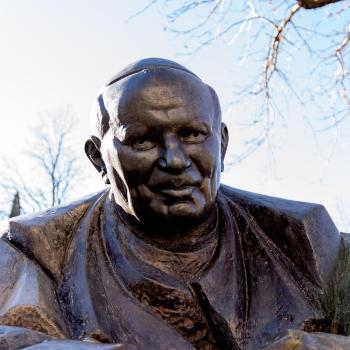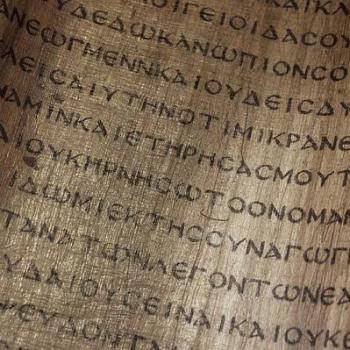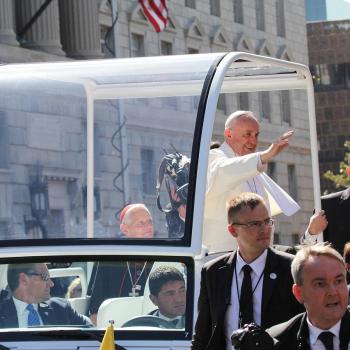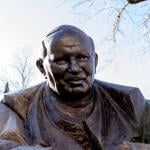Craig in Colorado asks:
What do you think is the future of denominations? Do you see any trends in history that may be indicators? And what do you think is the purpose (if any) of denominational affiliation?
The Guy responds:
The oddities surrounding religious denominations bring to mind that incomparably sinister American clergyman Jim Jones, who in 1978 lured 909 Peoples Temple followers at his Guyana compound into an orgy of murder and suicide, a third of whom were children. More on him below.
The United States invented the “free exercise of religion” and has never had a dominant or “established” church like those in Europe. Even the big Catholic Church is merely one “denomination” among many. The term applies essentially to hundreds of Christian bodies in the freewheeling U.S. religious market, though American Jews also speak of their several denominations or branches.
The American tendency toward individualism and localism produces increasing numbers of “non-denominational” congregations. When 1960s disruptions fostered general suspicion toward authority, tradition, and institutions, the chief religious victims turned out to be the older and relatively liberal “Mainline” Protestant denominations. Meanwhile, notable expansion continues among unaffiliated congregations of Evangelical, Fundamentalist, Pentecostal and Charismatic persuasion.
Since World War Two especially, much dynamism in Protestant outreach has come from Evangelical entrepreneurs and their “parachurch” organizations instead of denominational agencies. This is sometimes a mixed blessing. Harold Camping of Family Radio quit his Christian Reformed denomination and eventually spured all conventinal church groups as his broadcast network promoted a series of failed predictions for the dates Jesus Christ should have returned to establish his kingdom.
Denominations should be especially useful for upholding and certifying doctrinal sanity and moral probity. Though Jim Jones acted as a law unto himself, he was a minister in good standing with a perfectly respectable “Mainline” denomination, the Christian Church (Disciples of Christ), which in turn holds membership in the perfectly respectable National Council of Churches. By contrast, two celebrated media entrepreneurs caught in scandal, the Revs. Jim Bakker and Jimmy Swaggart, held clergy credentials in the Assemblies of God denomination, which defrocked both.
Two celebrated congregations in southern California look like typical independent megachurches but are actually part of denominations: Robert Schuller’s now-bankrupt Crystal Cathedral (Reformed Church in America) and Rick Warren’s thriving Saddleback Church (Southern Baptist Convention). Even fervently independent congregations that resist national or global denominational ties somehow can’t do without equivalents. Such flocks are often unified with others through specific identities, beliefs, and practices, and benefit from joint action similar to that provided by denominations. Examples:
1) The 13,000 Churches of Christ are set apart by a unique ban on musical instruments and cooperate in many ventures. 2) The 1,100 Plymouth Brethren assemblies, which lack ordained clergy, sometimes prefer the “Christian Brethren” designation to avoid denominational taint, yet sponsor effective publishing and mission agencies. 3) The Willow Creek Association unites 7,000 U.S. congregations through fellowship and the ministry design of an Illinois megachurch, though many simultaneously belong to denominations. 4) The Calvary Chapel Association has cloned 1,500 congregations worldwide, in this case without such dual affiliations. 5) The 1,200 U.S. congregations in the very distinctive Salvation Army administer neither baptism nor the Lord’s supper. This unusual trait may have originated back when the Army defined itself as a parachurch movement supplementing conventional churches rather than being a separate denomination itself.












